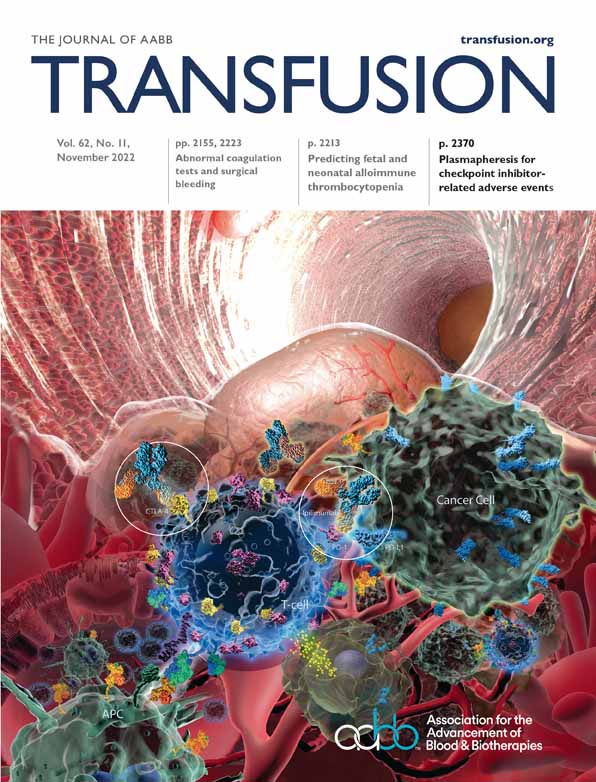Two novel platelet biotinylation methods and their impact on stored platelet concentrates in a blood bank environment
Funding information: Jacques und Gloria Gossweiler-Stiftung, Grant/Award Number: Hematology Research Grant 2020; Swiss Red Cross humanitarian foundation, Grant/Award Number: 254
Abstract
Background
Storage of platelet concentrates (PCs) has an impact on platelet quality and possibly affects their functions after transfusion. The influence of processing and storage conditions of PCs on their in vivo function upon transfusion is unknown. One option for investigating this question is to implement an ex vivo labeling of human platelets, to analyze them after transfusion into heathy volunteers and/or patients. In this study, we developed two labeling methods employing biotin.
Methods
Two methods of biotinylation were compared to a control (standard PC). The “Bio-Wash” process used washing steps to label all platelets within the PC; for the other method, “Bio-Direct,” one fifth of the PC were directly labeled without washing steps. The control and the two biotinylated PCs were analyzed over 7 days of storage. Labeling efficiency, platelet counts, phenotypes, and functions, along with time and costs, were evaluated to select the best process.
Results
Both methods achieved a stable labeling through the storage, with similar platelet counts and metabolism in comparison to control PCs. Bio-Wash showed higher activation phenotype and lower aggregation response in comparison to the Bio-Direct method. The Bio-Direct was performed within 1.5 h versus 3 h for the Bio-Wash. However, the Bio-Direct required 12 mg of biotin instead of 8 mg for the other process.
Conclusion
We set up two methods of biotinylation that can be easily implemented in a blood bank environment. The Bio-Direct process was preferred to the Bio-Wash because of its similarity, from a functional and phenotypic point of view, with standard PCs.
CONFLICT OF INTEREST
The authors declare no conflict of interest related to this work.




